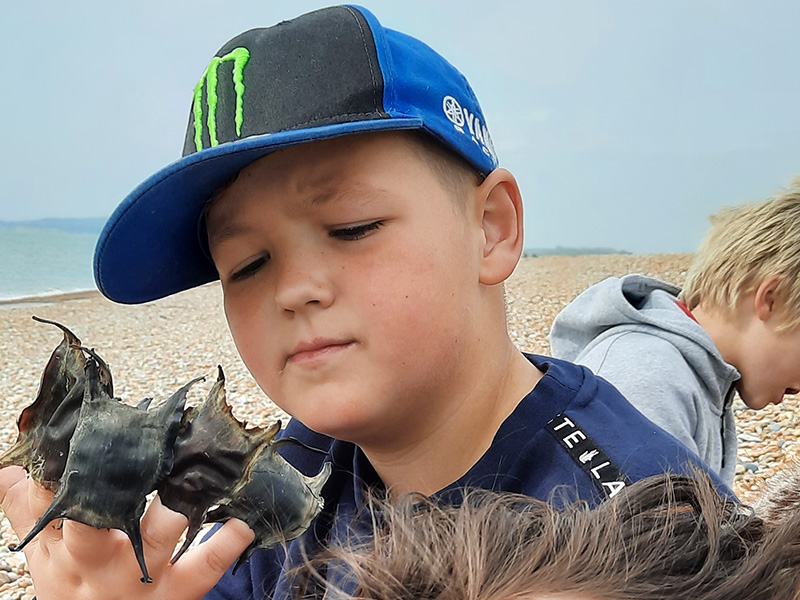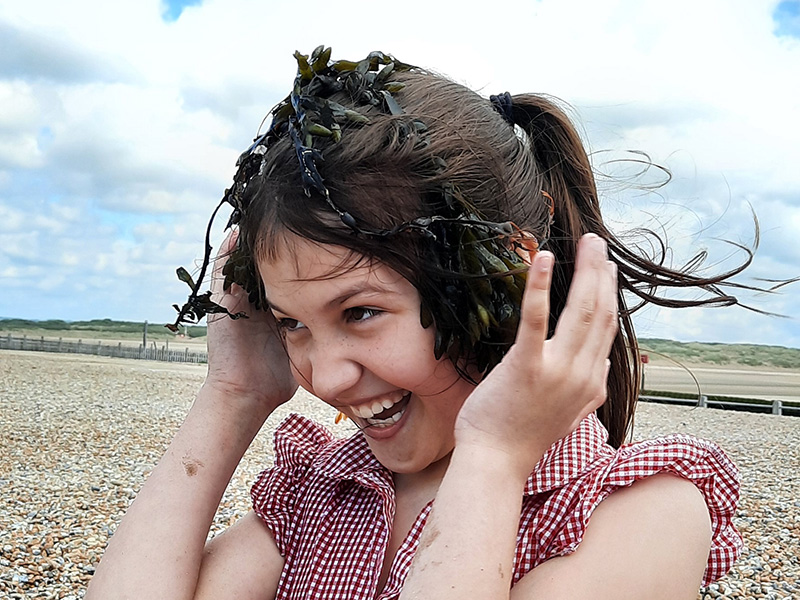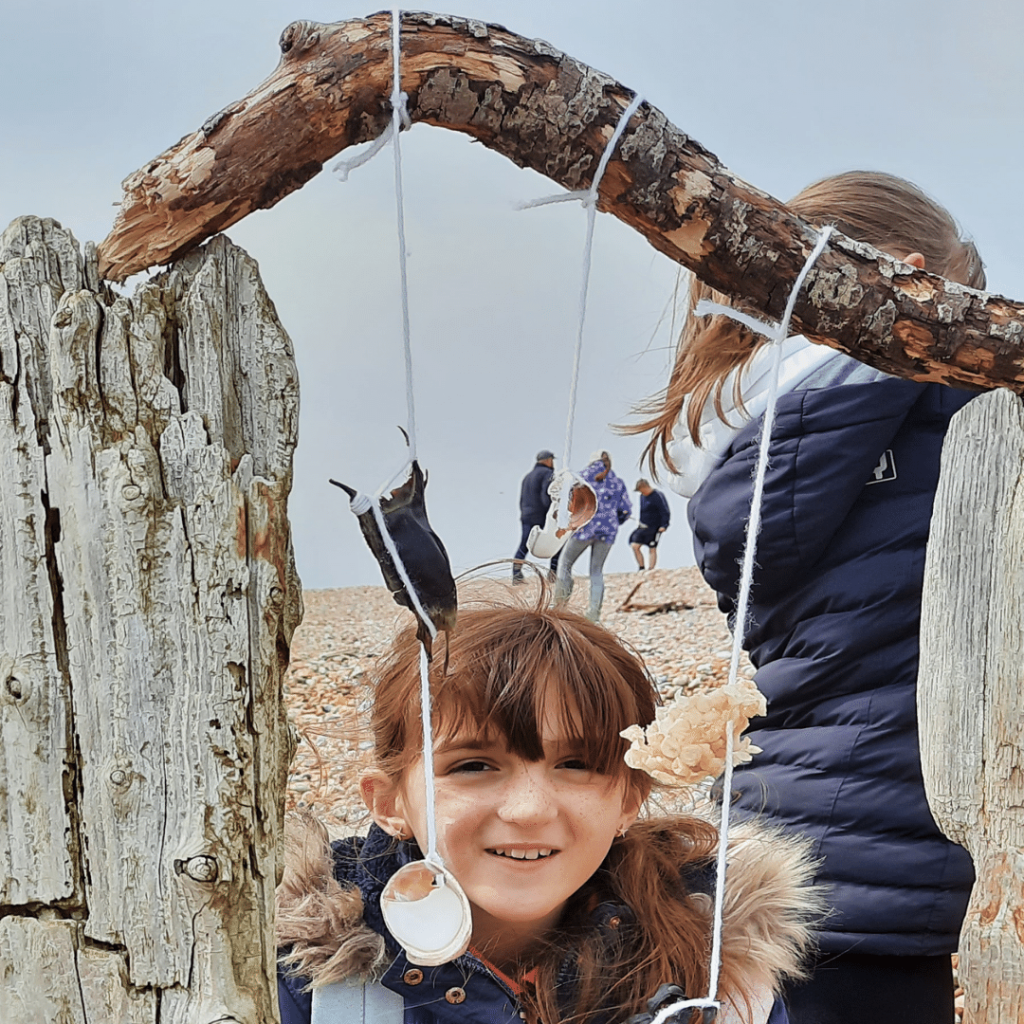Guest blog By Dee Rampling
Special Needs & Disabilities Co-ordinator (SENDCo), Winchelsea Primary School

A Wild Beach child has highly attuned senses and feels a meaningful connection with their surroundings, through what they hear, see, taste, feel, smell and intuitively experience at an emotional level. They will build upon an ever-increasing awareness of the impact of their surroundings upon them as beings, and their own impact, conversely, on their environment. This leads ultimately to a symbiotic relationship, between the child and their wild beach surroundings, which should develop into a healthy respect and sense of responsibility once this link becomes more embedded in the child’s consciousness, as they grow older.
A Wild Beach child will have developed a sense of curiosity and level of questioning that provide them with a life-long love of discovery and learning. They know how to stay safe but have the confidence to take risks. They are empowered to take an idea and run with it. Such a child is awed by the beauty and science of the beach and is keen to represent new ideas, responses and thoughts in a wide range of ways. A Wild Beach child is an artist, adventurer, explorer, scientist and ambassador. They will have an increasing self-confidence about expressing thoughts, feelings and ideas. They will know how to have fun and take risks but importantly, learn how to fail well and understand that life is not perfect, but that tiny actions can make a world of difference, just as many tiny pebbles make a beach.
“Ocean Connection” can allow children to make direct links between real life and the patterns, dramas, observations and experiences they discover on the beach too. The dichotomy of life is reflected in contrasting concepts all the time –

For example:
- Transient v permanent– Whilst the beach is ever changing, there are many constants, as if time has stood still, such as fossils
- Fragile v strong– Sometimes, like people, the most fragile things on the beach can also be strong (shells, sea-glass, migrating birds)
- Calm v rough -Like life, the sea and weather can be tranquil one minute and rough and challenging the next. All of life has to contend with such changes, not just us humans
- Happy v saddening– The beach can induce many emotions and feelings and it is important for children to understand that whilst it can help us to connect and experience its environment in a fun and joyous way, like life there is a darker side. The children will connect with this concept when considering pollution; conservation issues or the death or injury of creatures they may find on the beach
- Beauty v ugliness– Children can connect on an emotional level when being taught to appreciate the beauty of the beach whilst also accepting there can be great ugliness or even horror, e.g. When rock pooling, finding the remains of a creature half eaten by gulls

Once a child begins to realise the beach is such an unpredictable and contrary place, where things can go wrong, they can develop a deeper sense of connection by allowing themselves to be imperfect in an imperfect environment. They can experiment, make mistakes, accept that things go wrong, realise mistakes can turn into the unexpected- that life isn’t perfect, and neither are we, but trying new things and experimenting in the here and now, can forge new ideas and greater connections. They can learn that failure is fine, and it is something that we can learn from.
